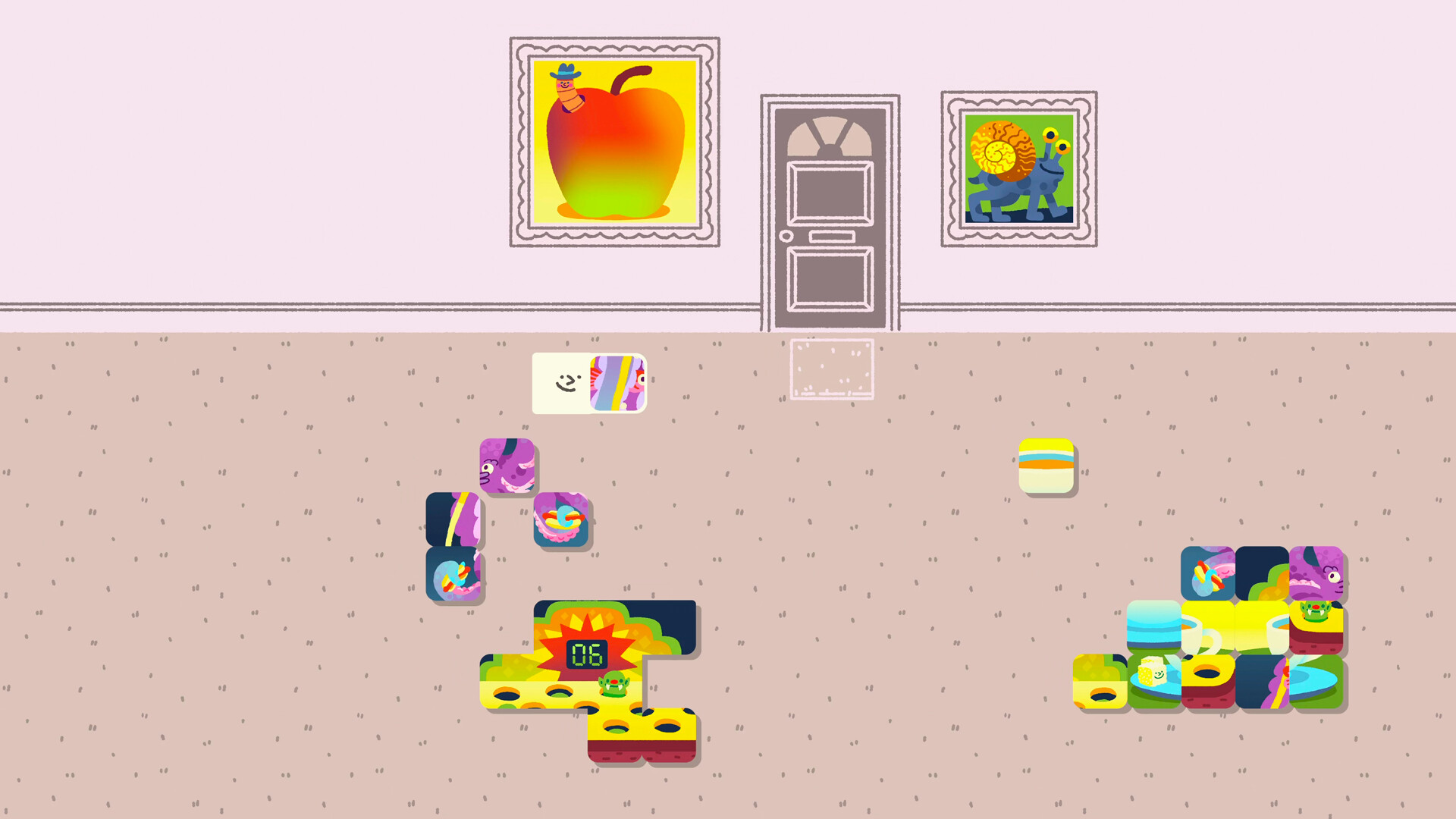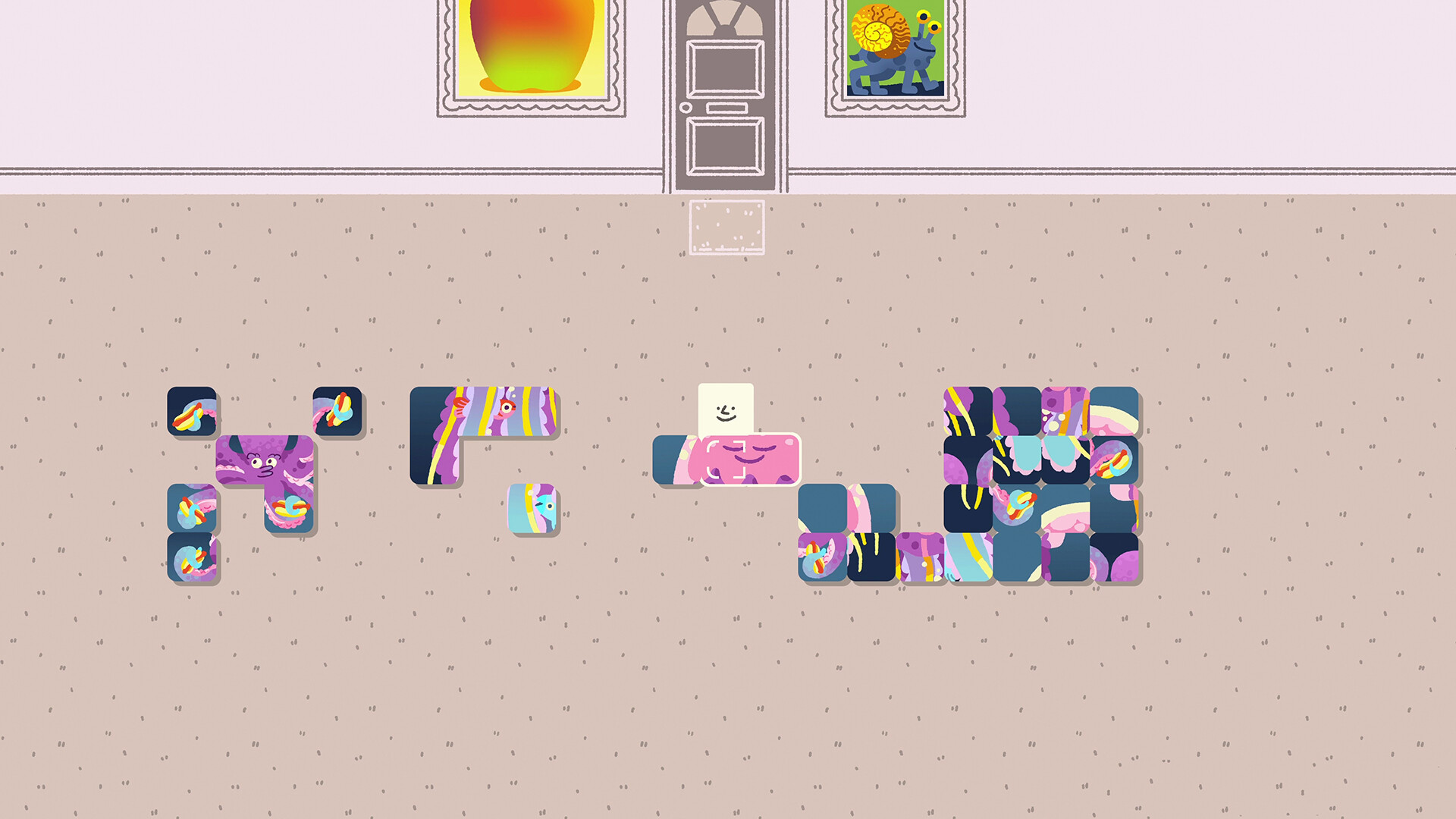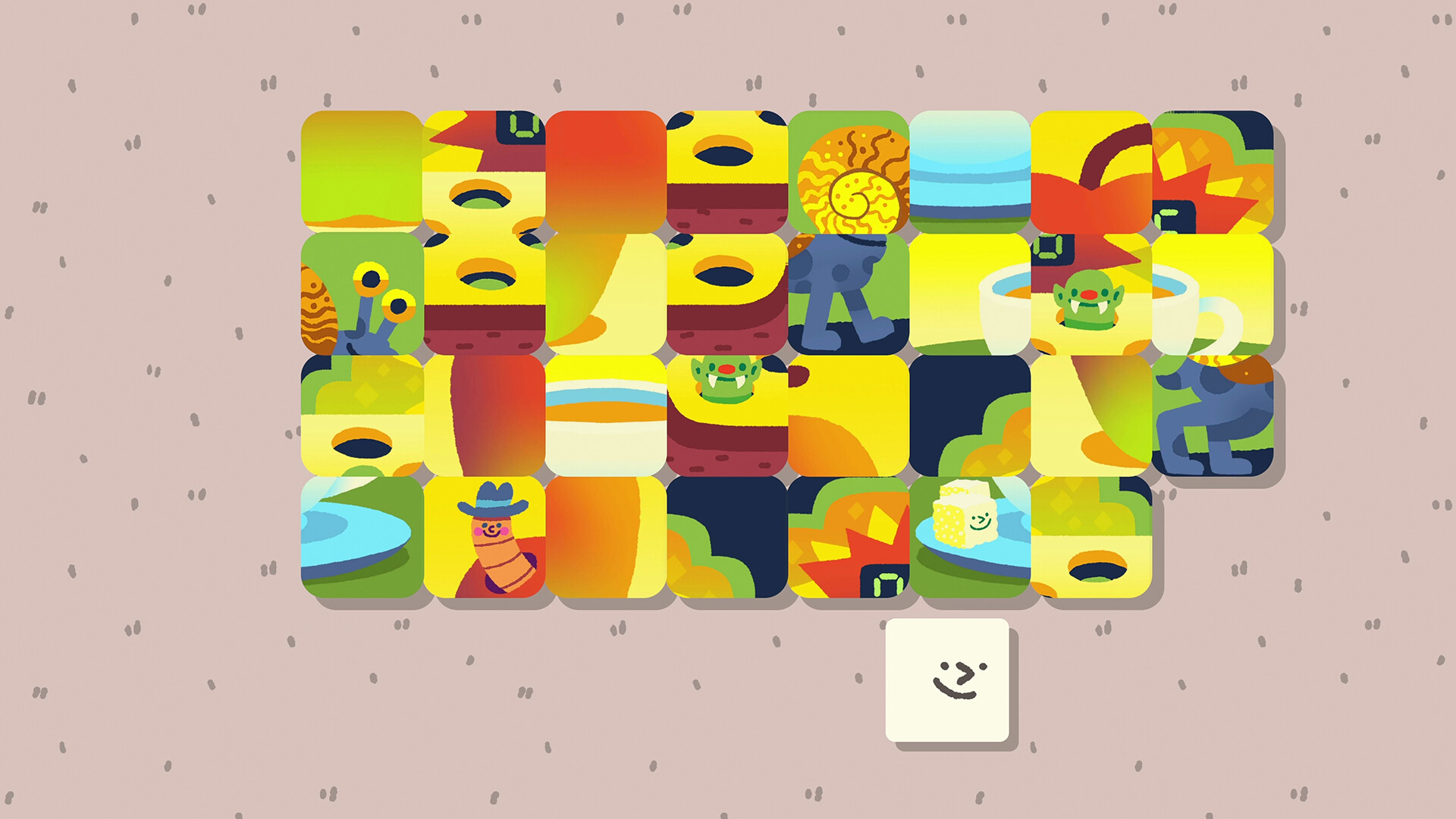Wilmot, the square-shaped star of Wilmot Works It Out, may already be familiar to you – he is also the main character of Wilmot’s Warehouse, a puzzle game released in 2019 that even got its own board game this year. In Wilmot Works It Out, we find out that Wilmot’s passion after a hard shift at the warehouse is to put together colourful jigsaws made out of entirely square pieces.
Possibly due to issues with mail delivery or his own erratic puzzle piece buying habits, the jigsaw, delivered at random intervals by a nice postal worker, arrive at Wilmot’s house scrambled. A delivery can feature pieces from several different puzzles, and only when you’ve put together what’s possible for you to finish with the given pieces will the postal worker knock on Wilmot’s door again. Maybe they’re a sadist, watching him work on his puzzles and get a kick out of giving him a hard time.
The gameplay mechanics behind putting jigsaws together in this game are actually the same as in Wilmot’s Warehouse. You have a top-down view of Wilmot and his puzzle, and you slide him around, attach him to puzzle pieces, then let them go next to a fitting piece. Wilmot can attach himself to several pieces at once, making it faster to find the right pieces and put them where they belong. You can also rotate the pieces to make sense of an image.
Wilmot’s ability to take a jigsaw apart relatively quickly is what allows you to make mistakes in Wilmot Works It Out without getting punished for them. You make different mistakes in WWIO compared to a normal puzzle, after all – in any normal puzzle, pieces that don’t belong together won’t fit, here, any puzzle piece can attach to any other.
The first few pictures from the demo are both relatively small and recognisable: a Braeburn apple and a… snail with legs? Soon enough, the images become larger and more complex. Thankfully, the increased difficulty is balanced by a relaxing atmosphere. The noise of slotting the pieces together is oddly satisfying, as is the chime at successfully finishing a puzzle, otherwise there is very little in the way of distraction, only a soothing soundtrack to accompany your puzzling. There is no timer, either, because unlike running a warehouse, putting a puzzle together in your free time isn’t about efficiency. All in all, it’s easy to see why Wilmot would enjoy this after a hard day’s work.
There are two incredibly fascinating things about Wilmot Works It Out. For one, this was a game that was conceived while developers Hollow Pond and Richard Hogg were working on Flock, a creature collector that released this past July. It really does feel as if, following a hard day at work making a video game, the developers made a video game about relaxing after work, which is an incredible feat.
Secondly, as someone who hasn’t completed a jigsaw since primary school, Wilmot Works It Out really made me think about what goes into a good puzzle. What does a picture need to have so that people can recognise it without ever having seen the original? Where do you part the pieces? In game design, you often simply try these things out on real people to see how they do, whether things need to be easier or more difficult to be satisfying, but I never thought that I would end up being so enthralled by a relatively simple concept.
That being said, as simple as the concept itself is, if you are, like me, easily challenged by puzzles that require spatial awareness, WWIO can become tricky early on – as soon as I needed to start rotating puzzle pieces in order to make sense of an image, I seriously started to sweat.
A large part of the joy of Wilmot Works It Out are of course Richard Hogg’s unique artworks. After playing even just a few of the games the artist has made with Hollow Ponds, I’ve been able to recognise his style, and I’m a big fan of the colourful whimsy that is so recognisably Richard Hogg, and because of that, just seeing each image completed gave me a boost. You can put each completed puzzle on a spot on Wilmot’s Wall, and you can choose that spot freely, which adds a lot to the satisfaction of completing a puzzle in this game. Instead of putting it apart and dumping it in a box, your puzzle is now a piece of art.
Wilmot Works It Out looks like an interesting continuation of a neat idea in a thoroughly relaxing setting. It will be interesting to see how much more difficult it can get, and what other images are waiting for me when the full game releases October 23, 2024.





Leave a comment